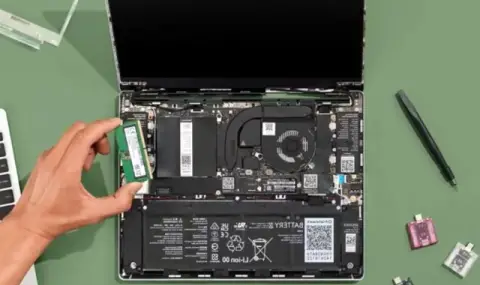While Intel's laptop processors now even include models with integrated memory chips, the company still dreams of creating an ecosystem of modular laptops that allow customers to upgrade their laptops after purchase. At least the last two generations of Intel-based laptops are moving in this direction.
Such statements were made by Gokul Subramaniam, vice president of Intel's client computing group and president of the corporation's Indian division. This approach allows laptop manufacturers to release models with different characteristics without major design changes.
There is already a laptop manufacturer on the market that has gained decent experience in creating modular solutions - this is the company Framewok. Its laptops allow you to replace the ports for connecting peripherals with more suitable ones for a particular user. For example, a block with a USB-C port can be replaced with a classic USB-A port if desired, and this is done without disassembling the laptop in seconds.
Intel will push the modular approach both at the system level and at the level of the laptop motherboard and even directly in the components. Now the company is helping partners develop modular solutions for 16- and 14-inch laptops, equipped with two or one cooling module with a fan, respectively. Intel also offers to make the motherboard itself modular, assembled from several parts using connectors or cables. The same M.2 modules have made it much easier to upgrade the laptop storage subsystem, as an Intel representative explained.
Another component of laptops that may need to be replaced at the user's request is the built-in webcam. The needs of laptop users in this area can vary greatly, and the specifications of the camera should not dictate the decision to choose a specific model of mobile computer as a whole. It's easier to swap out the camera for the one you need after you buy the laptop.
However, we're still far from fully standardizing modular laptop design, and it's unlikely to be implemented on an industry scale even with the support of a major player like Intel. Layout limitations and cost issues will hinder widespread adoption of a modular approach to laptop design.
